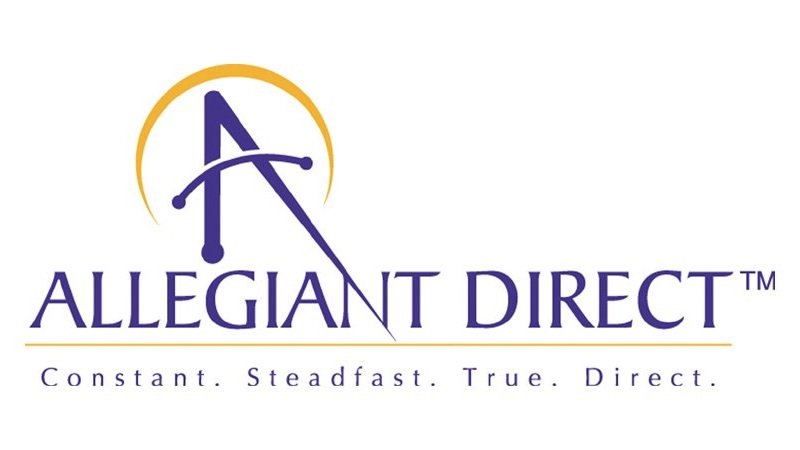By Joshua Meyer
Director of Marketing - OneCause
Guest Blogger
Due to the ongoing disruptions that 2020 has thrown our way, the nonprofit sector has had a challenging year so far. The COVID-19 pandemic and its broader effects have forced organizations of all sizes to approach fundraising using new tech and outreach strategies.
As many have already noted over recent months, simply pausing your fundraising and engagement efforts for the foreseeable future is not feasible for most nonprofits. But how do you keep donors engaged and supportive when meeting in person isn’t an option? The overwhelming consensus for the nonprofit sector has been to turn to virtual fundraising events.
At OneCause, we’re experts in planning and running charity auctions, but the COVID-19 pandemic has underscored the need for broader virtual strategies across the board in addition to engaging event plans. We’ve helped hundreds of nonprofits effectively pivot their tactics, whether through online auctions, virtual gala events, or peer-to-peer and online fundraising campaigns.
By now, your organization has likely already explored and implemented at least a few new ways to virtually interact with your community and ask for support online, but are you making the most of your new strategies?
To strengthen any of your organization’s strategies, look to your data.
One major benefit of leaning into digital fundraising and engagement is that it’s easier than ever to use data to enhance your strategies. With data-driven tactics, you can better focus your efforts to target and engage with specific donors in more specific ways, boosting relationships and fundraising effectiveness.
We’ll walk through the essentials of how to deliberately incorporate data into your virtual fundraising and engagement strategies, including:
Tie data into your virtual events.
Guide your marketing and outreach with data.
With more data guiding your new tactics, you’re sure to secure more support from your virtual audiences and build stronger relationships in the process. Let’s get started.
1. Tie data into your virtual events.
You already know that virtual fundraising and engagement events have quickly become the new norm for nonprofits everywhere. Dedicated supporters have been eager to stay engaged with the missions that matter to them, so the transition has been relatively smooth for many organizations. If your own nonprofit hasn’t yet explored its virtual event options, it’s not too late to get started.
If you are planning an upcoming virtual event, make sure your data plays an active role in shaping your strategy and planning process.
Specifically, dig into your database to look for key metrics about past event performance, attendee retention between events, average event ROI, and more. For example, use information in your database to answer questions like:
What have been our most successful events in both revenue and donor engagement?
What have been our least successful events?
How many attendees do we retain from one event to the next? Can this number be improved?
How many new attendees or donors do we attract to our organization for the first time through events?
What is the average cost-per-dollar-raised at our events, or revenue divided by expenses? Can we break this number down by revenue source or type of event?
By working through questions like these and finding the answers in your database or CRM platform, you’ll be on your way to generating more data-driven strategies for your events. For example, if your data reveals that attendee retention can be improved, securing more registrations from past supporters will be a great goal to set moving forward.
Putting this data to work
Your data can be an extremely useful resource when setting goals for your virtual events, but you’ll need to dig deeper once it’s time to start planning the event specifics.
For instance, let’s say your team is planning a virtual auction. How can you use data about your donors and past events to strengthen your engagement strategy? Effective item procurement and pricing is essential for any successful auction, so we’ll walk through examples of how data can help focus your efforts in this critical area.
Use your data to procure the perfect items that will engage your audience. The main draw of an auction (virtual or in-person) is the range of items offered. By using your donor data to learn more about your audience, you can build a more targeted item catalog. For instance, how old is your average event attendee? Do they have young children? What draws them to your mission?
A smaller but more focused catalog of items and packages will save your team’s time during the procurement process, generate more bids, and ultimately drive more revenue. Explore our complete list of charity auction item ideas to start brainstorming once you’ve studied your audience.
Guide the item pricing process with data from past events. For example, it can be difficult to determine a fair market value for intangible auction items like unique experience packages. Use your data to see what similar packages sold for during your last auction, or study audience demographics like age and income to make an educated estimate. Demographics and past auction data are invaluable for setting minimum bid amounts, as well.
How you price the items in your virtual auction will directly determine how much revenue your event can generate, so backing up your strategy with data is a smart move. The OneCause guide to pricing auction items walks through the process in detail.
2. Guide your marketing and outreach with data
As you’re already well aware, promoting your events and campaigns to your audience plays a huge role in determining your success.
Competition for your donors’ attention online can be fierce because every other nonprofit and business has quickly shifted their own strategies to generate more digital engagement, too. This makes effective marketing and outreach more important than ever to back up your new virtual efforts.
When promoting your virtual fundraising events and campaigns, analyze your data to find metrics like:
Email open rates and clickthrough rates
Engagement on your social media profiles
Traffic growth and most-visited pages on your website
Your donation page’s or event registration pages’ conversion rates
Cost-per-acquisition for your marketing campaigns, or a campaign’s total marketing costs divided by the number of new donors or attendees acquired
Ideally, marketing metrics like these will be readily available in your CRM if you have integrations set up between your various marketing platforms or software. Otherwise, you’ll need to examine your email, social media, and website engagement data separately.
Putting this data to work
Data can guide your marketing strategies in a variety of ways when promoting an upcoming virtual event or campaign. Here are a few recommendations:
Track engagement history. Whenever possible, tracking how each supporter in your database engages with your marketing campaigns is invaluable information for strengthening all your future tactics. It gives you fine-tuned insights into which fundraising appeals or event invitations have been the most successful, laying the groundwork for you to continue building on those strategies (and avoiding those that don’t generate much interest). Tracking engagement is essential for modern digital marketing.
Segment your audience. Blasting the same email or sending the same letter to every contact in your database is rarely a good idea. In today’s virtual fundraising world, tailored and targeted communications are key. While everyone should be invited, targeting your outreach with additional, more specific messaging is a good way to secure supporters and stand out in an online world. Donors who have already engaged with a past virtual campaign or event are a great starting point to begin segmenting your audience. Think specifically about who you want to reach and what message will attract them.
Choose the right channels. Once you understand which segments of your audience you want to target, take a look at which marketing channels they’re most engaged with, and focus your efforts there. If your target audience is highly receptive to email and direct mail, anchor your marketing strategy with those methods. If your audience is very engaged on social media, invest time in developing promotional content for Facebook and Instagram.
Identify and recruit social donors. If social media is a part of your marketing strategy (and it should be), tap into the peer-to-peer power of these platforms by recruiting social fundraisers or ambassadors. Use your donor data to identify individuals who are highly engaged with your organization online or who are well-connected in your community. Then, empower them to fundraise for your upcoming virtual event or campaign. This can be an extremely effective way to grow your online audience and raise more support in the process.
Amid all the disruptions and distractions of the past several months, doubling down on digital and direct mail marketing is a smart move. It increases the visibility of your events and campaigns, generating more donations, registrations, and engagement. Plus, it keeps your mission and your organization on the minds of supporters!
Reinforcing your connections with donors starts with simply staying in touch, so any data that can help support and strengthen your outreach efforts is worth paying attention to. Investing in dedicated marketing software that can integrate with your nonprofit CRM platform is a great way to start building a stronger data foundation for your organization.
The nonprofit sector was already broadly shifting towards increasingly digital strategies before the COVID-19 pandemic and social distancing guidelines. In many ways, the events of 2020 have only served to (dramatically) accelerate that shift.
As virtual engagement becomes a more central part of organizations’ strategies moving forward, shaping those strategies with data is the best way to ensure maximum impact. Take a look at your own donor data and try to come up with new insights that can help direct your virtual event planning or marketing efforts. There are sure to be plenty of new ideas and strategies hiding in your database!
About the author…
Joshua Meyer brings over 14 years of fundraising, volunteer management, and marketing experience to his current role as the Director of Marketing for OneCause. Currently, as a member of the OneCause sales and marketing team, Josh manages all of the firm’s marketing efforts. He has a passion for helping to create positive change and loves that his current role allows him to help nonprofits engage new donors and achieve their fundraising goals.






